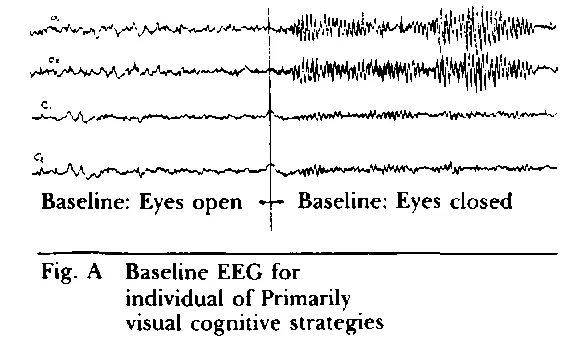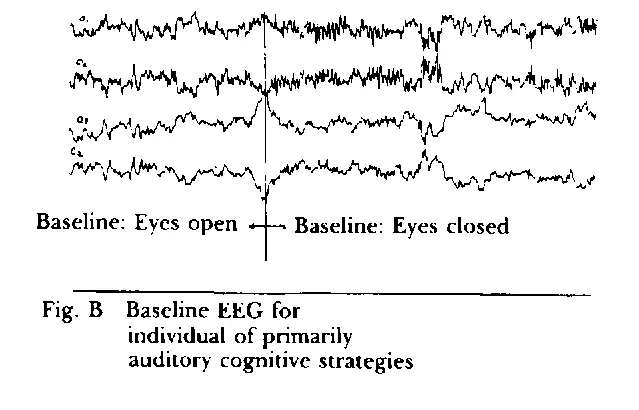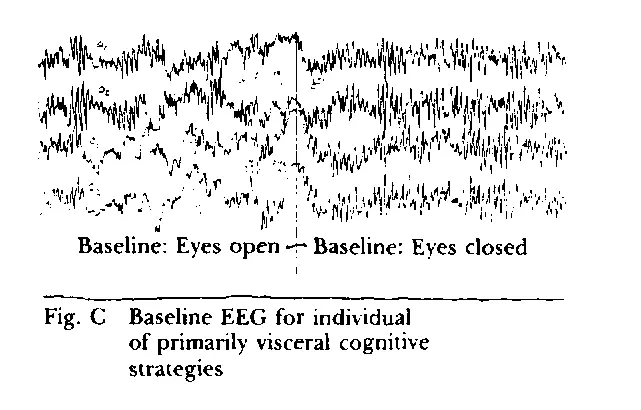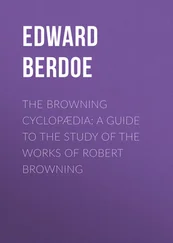Baseline EEG description:Low amplitude beta (over 16 Hz) activity when subject's eyes are open and subject is at rest. Spindles of alpha waves (8–12 Hz) appear when the subject closes his or her eyes.
Primary representational system:Visual.
Baseline EEG description:High amplitude beta activity with some intermitant alpha activity whether eyes are open or closed.
Primary representational system:Auditory.
Baseline EEG description:Low amplitude beta whether eyes are open or closed.
Primary representational system:Kinesthetic (tactile–motor)
Baseline EEG description:High amplitude alpha waves, whether the subject's eyes are open or closed.
Primary representational system:Kinesthetic (visceral)
The following are generalizations of these patterns for EEG surface electrodes placed over the occipital (visual) cortex of the subjects:



Accessing cues carried out over long periods of time, particularly those involving breathing, posture and muscle tonus, will begin to shape an individual's body. Those who have specialized themselves with respect to representational systems— people who have come to value one representational system over the others for most of their behavior — will remain in particular accessing postures and maintain certain breathing rates and levels of muscle tension. This contributes to the relative atrophy or hypertrophy of certain muscle groups and affects the body's metabolism. We have noticed that certain body types tend to reflect the primary representation system of the individual. These body types seem to be the result of an interaction between the extended use of postural and other anatomical accessing processes and the genetic makeup of the individual.
The patterns we have observed between body types and primary representation systems seem to parallel, in some ways, the work on constitutional psychology proposed by W. H. Sheldon.
a) A thin, tense body (Sheldon's ectomorph) is characteristic of a visually oriented person.
b) An athletic, muscular body (Sheldon's mesomorph) is characteristic of an individual who is more kinesthetically (in the tactile and motor realm) oriented.
c) A full, soft body (Sheldon's endomorph) characterizes a person who is more oriented toward visceral or internal kinesthetics.
d) The body of an auditorily oriented person tends to be in between those identified above, and is more readily identified by the "saxophone" posture described in this section.
The exact formulation is given by W.R. Ashby in Introduction to Cybernetics (1956), p. 206 and p. 245. The generalized form offered in the text assumes no element has a structurally dominant position.
We have been making plans for some time to organize a project in which the twelve people who are best able to achieve outcomes in each of the major divisions of the sciences and the arts will be modeled for their strategies. This would result in a battery of the most effective strategies for many fields or sectors of organized human behavior.














